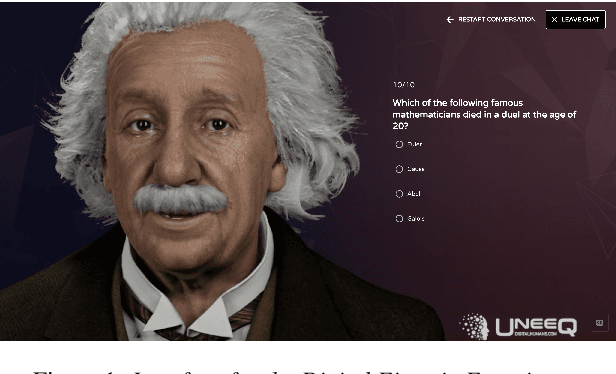Kilian Sprenkamp
Biased by Design: Leveraging AI Biases to Enhance Critical Thinking of News Readers
Apr 20, 2025Abstract:This paper explores the design of a propaganda detection tool using Large Language Models (LLMs). Acknowledging the inherent biases in AI models, especially in political contexts, we investigate how these biases might be leveraged to enhance critical thinking in news consumption. Countering the typical view of AI biases as detrimental, our research proposes strategies of user choice and personalization in response to a user's political stance, applying psychological concepts of confirmation bias and cognitive dissonance. We present findings from a qualitative user study, offering insights and design recommendations (bias awareness, personalization and choice, and gradual introduction of diverse perspectives) for AI tools in propaganda detection.
Towards Effective EU E-Participation: The Development of AskThePublic
Apr 04, 2025Abstract:E-participation platforms can be an important asset for governments in increasing trust and fostering democratic societies. By engaging non-governmental and private institutions, domain experts, and even the general public, policymakers can make informed and inclusive decisions. Drawing on the Media Richness Theory and applying the Design Science Research method, we explore how a chatbot can be designed to improve the effectiveness of the policy-making process of existing citizen involvement platforms. Leveraging the Have Your Say platform, which solicits feedback on European Commission initiatives and regulations, a Large Language Model based chatbot, called AskThePublic is created, providing policymakers, journalists, researchers, and interested citizens with a convenient channel to explore and engage with public input. By conducting 11 semistructured interviews, the results show that the participants value the interactive and structured responses as well as enhanced language capabilities, thus increasing their likelihood of engaging with AskThePublic over the existing platform. An outlook for future iterations is provided and discussed with regard to the perspectives of the different stakeholders.
Think Fast, Think Slow, Think Critical: Designing an Automated Propaganda Detection Tool
Feb 29, 2024



Abstract:In today's digital age, characterized by rapid news consumption and increasing vulnerability to propaganda, fostering citizens' critical thinking is crucial for stable democracies. This paper introduces the design of ClarifAI, a novel automated propaganda detection tool designed to nudge readers towards more critical news consumption by activating the analytical mode of thinking, following Kahneman's dual-system theory of cognition. Using Large Language Models, ClarifAI detects propaganda in news articles and provides context-rich explanations, enhancing users' understanding and critical thinking. Our contribution is threefold: first, we propose the design of ClarifAI; second, in an online experiment, we demonstrate that this design effectively encourages news readers to engage in more critical reading; and third, we emphasize the value of explanations for fostering critical thinking. The study thus offers both a practical tool and useful design knowledge for mitigating propaganda in digital news.
Large Language Models for Propaganda Detection
Oct 10, 2023Abstract:The prevalence of propaganda in our digital society poses a challenge to societal harmony and the dissemination of truth. Detecting propaganda through NLP in text is challenging due to subtle manipulation techniques and contextual dependencies. To address this issue, we investigate the effectiveness of modern Large Language Models (LLMs) such as GPT-3 and GPT-4 for propaganda detection. We conduct experiments using the SemEval-2020 task 11 dataset, which features news articles labeled with 14 propaganda techniques as a multi-label classification problem. Five variations of GPT-3 and GPT-4 are employed, incorporating various prompt engineering and fine-tuning strategies across the different models. We evaluate the models' performance by assessing metrics such as $F1$ score, $Precision$, and $Recall$, comparing the results with the current state-of-the-art approach using RoBERTa. Our findings demonstrate that GPT-4 achieves comparable results to the current state-of-the-art. Further, this study analyzes the potential and challenges of LLMs in complex tasks like propaganda detection.
Digital Einstein Experience: Fast Text-to-Speech for Conversational AI
Jul 21, 2021

Abstract:We describe our approach to create and deliver a custom voice for a conversational AI use-case. More specifically, we provide a voice for a Digital Einstein character, to enable human-computer interaction within the digital conversation experience. To create the voice which fits the context well, we first design a voice character and we produce the recordings which correspond to the desired speech attributes. We then model the voice. Our solution utilizes Fastspeech 2 for log-scaled mel-spectrogram prediction from phonemes and Parallel WaveGAN to generate the waveforms. The system supports a character input and gives a speech waveform at the output. We use a custom dictionary for selected words to ensure their proper pronunciation. Our proposed cloud architecture enables for fast voice delivery, making it possible to talk to the digital version of Albert Einstein in real-time.
 Add to Chrome
Add to Chrome Add to Firefox
Add to Firefox Add to Edge
Add to Edge